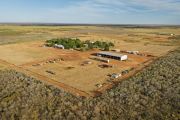
Lendlease and Crown Estate in joint venture talks over six UK projects
Lendlease is in talks with The Crown Estate, the property arm of the British royal family, to sell a half-stake in six UK projects, worth as much as $38 billion when fully developed, as it winds back its involvement in overseas markets to focus on its Australian operations.
ASX-listed Lendlease said on Thursday negotiations with The Crown Estate were “in the late stages” to enter into a 50-50 joint-venture over the projects, with Lendlease earning fees as master developer of existing projects for the venture.

The move is the next step to recycle capital Lendlease has invested in long-term overseas development projects – a strategy designed to return $1.7 billion, the company said last year. In line with the direction it adopted under pressure from shareholders last year, the company said it was aiming to achieve sale values for the UK projects “at or slightly above” book value.
“Lendlease’s immediate focus would be to continue to progress its master planning obligations, while retaining the rights for any vertical developments,” the company said.
“An announcement will be made should a binding agreement be concluded.”
The projects
The six projects are the £1.5 billion ($3 billion) Smithfield Birmingham redevelopment in the West Midlands, an £8 billion project with housing charity Peabody in London called Thamesmead, the £4 billion redevelopment of land around Euston Station, the £3.5 billion Silvertown Quays/ Millennium Mills with Starwood Capital, the much-delayed and controversial £1.3 billion High Road West scheme in London’s Tottenham district, and the Stratford Cross redevelopment of the 2012 Olympic and Paralympic Games precinct, a project previously called International Quarter London.
Analysts welcomed the development, with JP Morgan analyst Richard Jones saying the realised joint venture could release of about $250 million of capital – reflecting an above-book value for half of Lendlease’s $431 million of invested capital – and at a faster rate than previously anticipated.
“We see the potential transaction as a positive, demonstrating management’s commitment to look to maximise value and bring forward the release of capital from its overseas developments,” JP Morgan analyst Richard Jones said.
“We expect the transaction to close in FY26 and potentially release $10 million to $50 million in profit.”
With a combined value of about £22 billion, the projects will create more than 25,000 homes and over 836,000 square metres of commercial space.
One irony of the move is that as Lendlease reduces exposure to the UK – an urban regeneration market in which it drew attention, and controversy, with the $4.9 billion Elephant Park precinct in southeast London – it is handing over a share of these projects to Dan Labbad, a former Lendlease executive pipped for the top post by Steve McCann in 2009. Labbad became the company’s European head and was named chief executive of The Crown Estate in 2019.
Labbad, from western Sydney – and the first non-Brit to head the British monarch’s £15.5 billion property portfolio – is a seasoned property executive who knows Lendlease and its projects well.
“He would have been responsible for winning most of them,” one analyst said.
When announcing first-half earnings in February, Lendlease said it had divested $2.2 billion worth of assets out of a target it had set for this year of $2.8 billion. It said it was on track to meet the target.
Lendlease shares fell 9¢, or 1.6 per cent, to $5.39, a slightly larger decline than the 1.3 per cent loss of the 20-member S&P ASX Real Estate Index on a day when none of the member companies gained.











